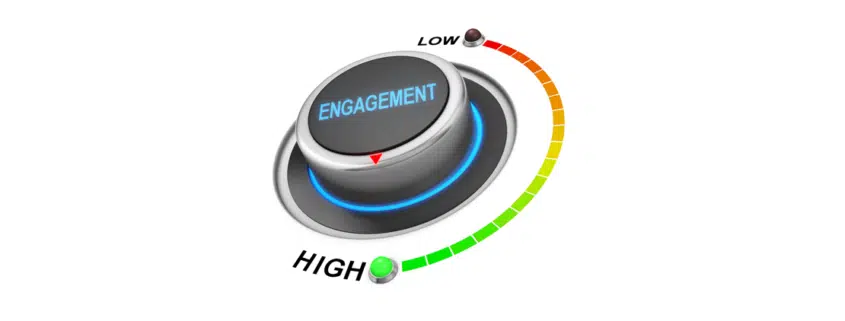Make Employee Engagement an Ongoing Marketing Strategy
Too often, organizations consider employee retention or employee engagement as a human resource or operations focus and assume that marketing should be focused on external audiences.
If that statement seems true to you/your business, I challenge you to remove any preconceived ideas, toss off the blinders, and consider current employees as the priority audience to market to through deliberate employee engagement efforts.
The Great Resignation, also known as the Big Quit and the Great Reshuffle, is an ongoing economic trend in which employees have voluntarily resigned from their jobs en masse, beginning in early 2021 in the wake of the COVID-19 pandemic. It has continued and we’ve seen a record number of workers in the United States resign from their jobs.
Even more challenging is the more recent phenom “quiet quitting” meaning that employees remain in their workplace while not actively going above and beyond.
Business leaders allocate dollars to continue to grow their organizations while spending extraordinarily less on internal marketing initiatives that could – in both the short- and long-term – significantly grow their business through the retention of key talent.
How can your organization better reap the benefits of employee engagement efforts? Consider the following efforts to begin making an impact.
Conduct an Employee Audit.
Like any key marketing effort, it begins with listening to the audience and understanding their wants/needs, not what you can offer. In very large organizations, there may be many layers within the organization so it will be key to identify how the process can work efficiently where everyone – yep, everyone from the mid-level team members to the office managers – have an opportunity to be heard. In smaller organizations, the key leadership team should be tasked with this critical opportunity through one-to-one conversations.
Create an Employee Engagement Matrix.
While being heard is important, following through and communicating next steps and action items is critical. Don’t let that insight languish. Based on the information gathered, develop a matrix to help outline individuals and/or groups of individuals’ goals. A matrix can take on a variety of different formats – some demonstrate a ladder to growth and promotions and others share internal/external professional development opportunities. Create a matrix, communicate it to your employees, and provide updates on a quarterly basis.
Host an All-Employee Day.
Before you turn away from this idea because your organization is just “too busy,” consider this: would you dismiss a meeting with your most important customer? Likely not. Take – and make – the time to develop a day of learning, connection, and fun to (re)connect with employees and allow them to develop relationships and collaborate with others in the organization. The day can range from sharing organizational goals, introducing/discussing the matrix, and creating cross-functional activities, but most of all, find opportunities throughout the session to have fun.
With a plethora of new employees who may not be familiar with your workplace or long-term employees who may have lost their passion, consider how to best engage your team and set them up for success.
As employee retention and employee engagement becomes more important in the year(s) ahead, take the time to prioritize this audience now and they will take care of your customers for years to come. At Chartwell, we have 20 years of experience in facilitation and training, and we can provide your organization or association with impactful strategic planning and/or provide beneficial training to your employees in whatever ways you deem necessary. This facilitation and training ensures that your team members will be on the same page in regard to priorities, focuses, and communication tactics, and will smooth out the human interactions both in and outside of your organization.








